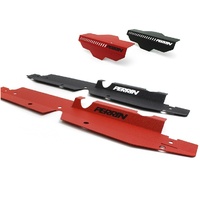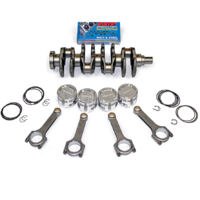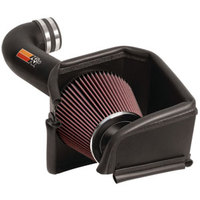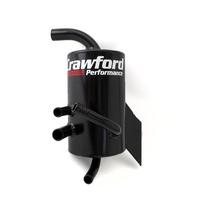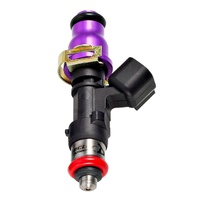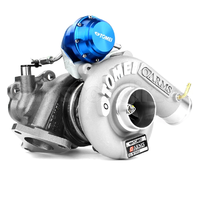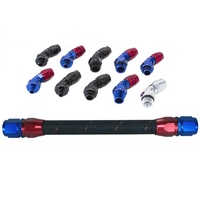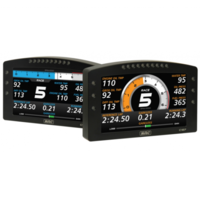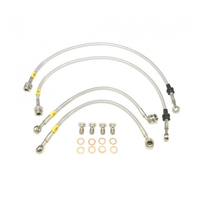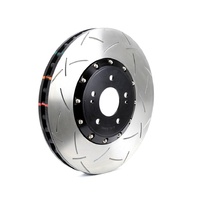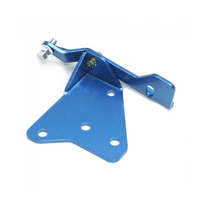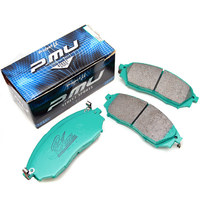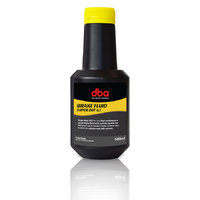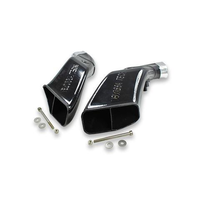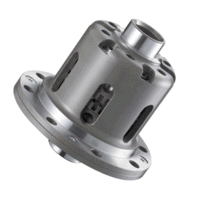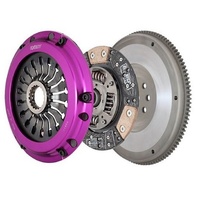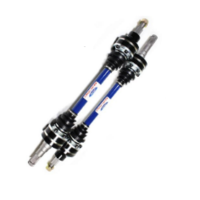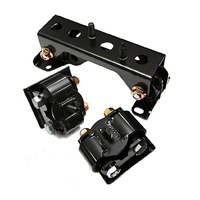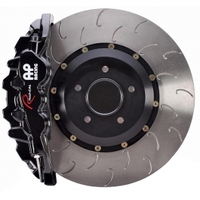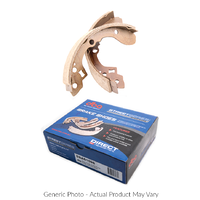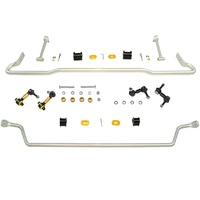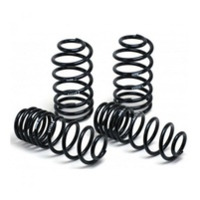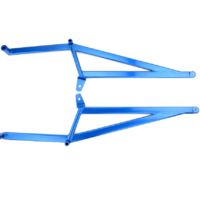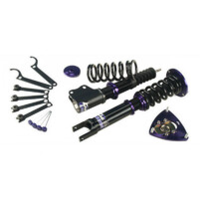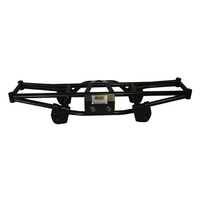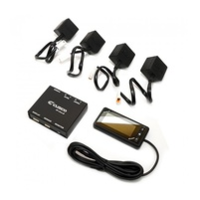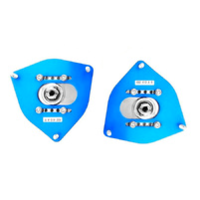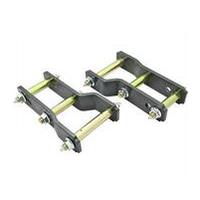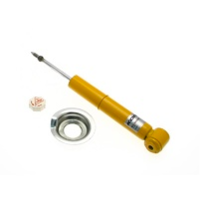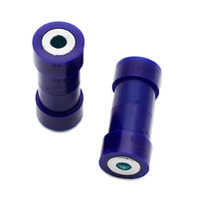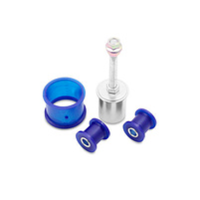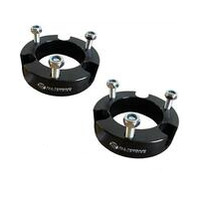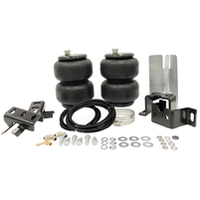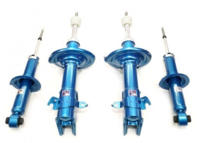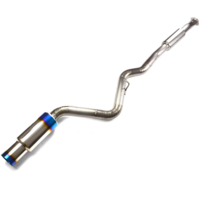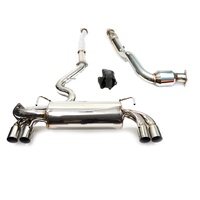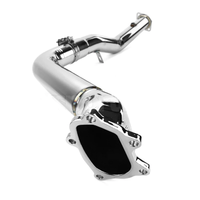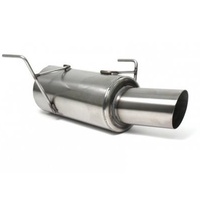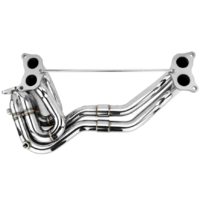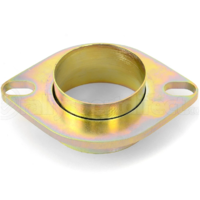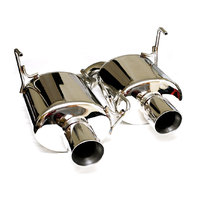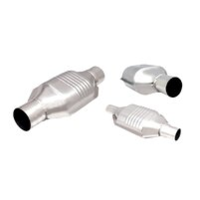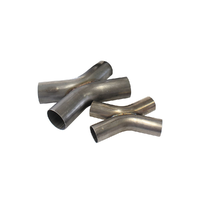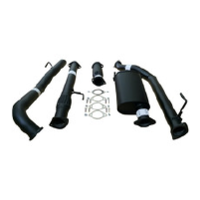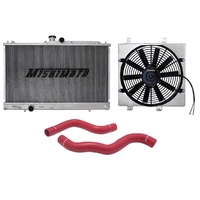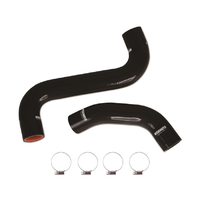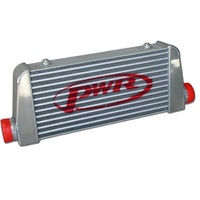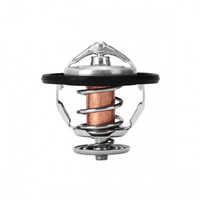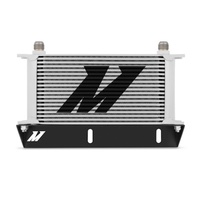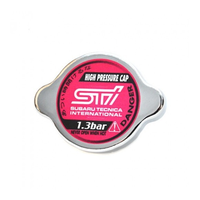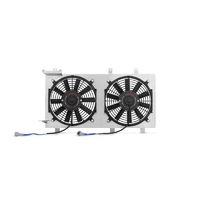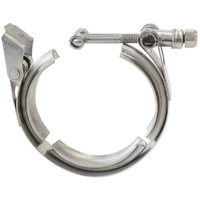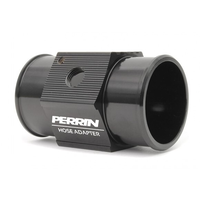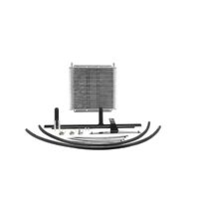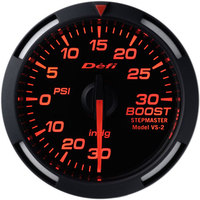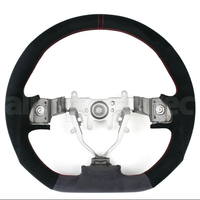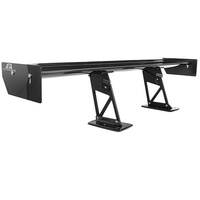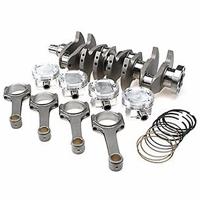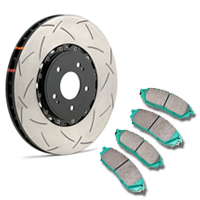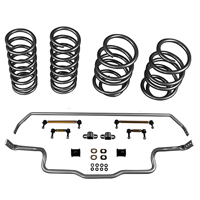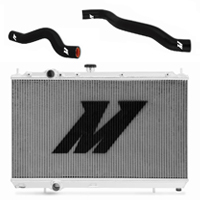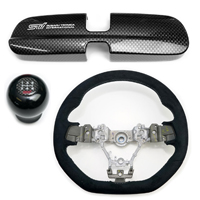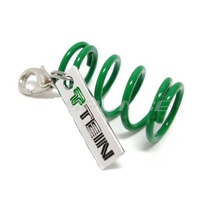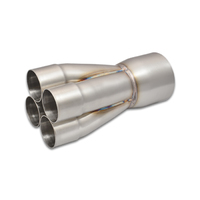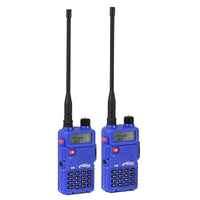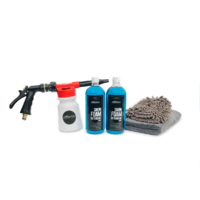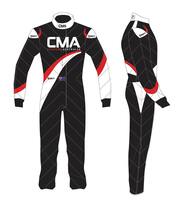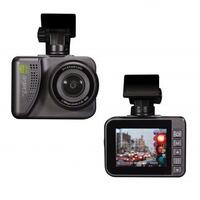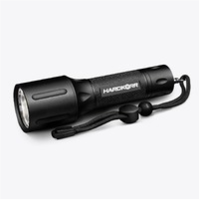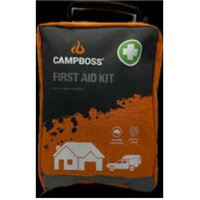Why Buy From Us?
- Australian Owned
- 100% Fitment Guarantee
- Genuine Quality Brands

Shop now. Pay Later. Interest Free.
Make 4 interest-free payments of $1,057.90 fortnightly and receive your order now. More info

Enjoy Now, Pay Later
Can't Find What You're Looking For?
If you're looking for something in particular, we can help. Drop us a line using the button below.
Submit A RequestWhy Buy From Us?
- Australian Owned
- 100% Fitment Guarantee
- Genuine Quality Brands
Description
MoTeC's M1 ECU range begins a new era in engine control. The M1's unique technology redefines the meaning of customisation, delivering total control without compromise. Highly advanced security strategies make these ECU's ideal for both category managed and unrestricted applications.
Specifications
Motec | 13141 | Data Analysis
The following features in GPR Diesel have been specifically designed to run diesel engines:
- Operates diesel direct injected engines from 1 to 8 cylinders with inductive or piezo injectors and synchronous direct injection fuel pumps. Refer to the Engine Compatibility section for known applicable engines in the GPR Diesel Package Datasheet.
- Turbocharger boost pressure control of either a PWM solenoid or servo motor for use with a Variable Nozzle Turbo (VNT), wastegate, bypass etc. The boost control can be fully configured via a PID control system that gives the user full control over the response and stability of the system. The Boost Aim can be varied based on Fuel Mass, Engine Speed and Ambient Pressure.
- To ensure safe operation, a number of overriding Boost Limits can also be set. These limits may be based on Coolant Temperature, Engine Load, Exhaust Temperature, Inlet Air Temperature, Race Time, Gear, Vehicle Speed and Turbocharger Speed.
- Control of a throttle valve is also supported. This throttle valve can be used to assist engine shutdown or reduce power during Engine Overrun.
- Exhaust Gas Recirculation control via a servo motor, solenoid or stepper motor actuator. The EGR amount applied can be varied with Engine Speed and Fuel Mass. Compensations for Air Temperature, Coolant Temperature and Ambient Pressure can also be applied.
- A Start Off EGR Compensation can be used to avoid soot formation when the vehicle takes off. Separate EGR aims can be used for Overrun and Gear Shifts. The Throttle Servo or a Flap Actuator (EGR Cooler) can also be controlled during EGR requests.
- The Glow Plug Control system includes independent strategies to control the glow plugs pre-cranking, during cranking and post cranking. Each phase has tuneable compensations for Coolant Temperature and Battery Voltage.
- Ignition outputs are available for each cylinder to check the timing of the fuel injection.
- Advanced LTC Enable functionality ensures safe operation of Lambda sensors.
The following features from MoTeC’s GPR Package are maintained in the GPR Diesel Package:
- Configurable engine synchronisation mode for many common engine types. Refer to the Engine Synchronisation Modes section for current details.
- Configurable top dead centre for each cylinder allows for odd-fire engines.
- Configurable camshaft control from 1 to 4 cams, plus 1 switched camshaft.
- Physical settings for engine displacement, fuel properties, and injector characteristics allow for simplified engine start-up prior to tuning.
- Sensor calibrations available for many common automotive sensors. Sensors calibrations can also be manually defined.
- Support for analogue and digital (frequency or duty cycle) sensors.
- Support for single wire digital (SENT) sensors.
- Diagnostics on all sensors to check for high and low shorts. When the diagnostic detects a fault, the Package either deactivates any functions using the faulting sensor or uses the pre-defined sensor estimates. The Airbox Mass Flow Sensor has extra plausibility diagnostics to check for offset and gain faults.
- Support for MoTeC devices: ADR, E8XX, PDM, SLM, Video Systems
- Supports CAN messaging for BOSCH ABS M4 unit.
- Test settings for most outputs, including injection and ignition outputs, for easier setup.
- Configurable turbocharger bypass (blow off) control.
- Supports two coolant fan outputs (PWM controlled).
- Configurable closed loop alternator control system for PWM field winding control.
- Air conditioner support with switched output control and optional refrigerant pressure sensor.
- Coolant pump output with PWM control.
- Coolant pump after-run functionality, optionally with additional pump output.
- Engine speed limiting via fuel cut.
- Fuel pump switched output.
- Fuel Flow Supply Sensor and Fuel Flow Return Sensor.
- Gearbox position detection via optional dual sensor or engine speed/wheel speed estimate.
- Gearbox shift request via Up Shift Switch/Down Shift Switch or Gear Lever Force sensor.
- GPS acquisition and logging via CAN or RS232.
- GLONASS messaging support on GPS devices.
- Intercooler temperature and spray control.
- Differential temperature control with dedicated temperature sensor and switched pump output.
- Engine charge temperature calculation allows for correction of inlet air temperature (compensation of heat soak effect etc.).
- Lap distance, time and number via BR2, GPS or switched input, with split and sector options.
- Configurable launch control with tables for engine speed, throttle limit, boost aim and fuel volume trim.
- Race time system with tables for fuel mass, fuel timing, boost limit and throttle limit.
- Engine Load Average channel with tables for engine speed limit and boost limit.
- Inlet Manifold Flap support (actuator with position).
- Inlet Manifold Runner support (actuator with position feedback).
- Assisted engine start control with dedicated fuel mass and idle compensations during crank and post start.
- Engine run time total for engine hour logging.
- Configurable security for multiple users with differing access options.
- Configuration of brake state using a switch or pressure sensor.
- Configuration of clutch state using a switch, a position sensor or a pressure sensor.
- Transmission brake control ('bump') functionality for perfect positioning of cars, with ‘creep’ feature.
- Calculation of clutch slip ratio.
- ECU-internal G-force (acceleration) – longitudinal, lateral, vertical.
- ECU CAN receive from a defined CAN ID for data reception from MoTeC devices.
- Support of up to three separate CAN buses.
- Most common ECU channels transmitted on CAN using standard MoTeC CAN templates.
- 8 configurable switches and 8 rotary switches (wired or CAN input) each with 10 positions. These can be simultaneously mapped to Launch Control, Pit Switch, Traction, Race Time Reset, Engine Speed Limit Maximum, Throttle Pedal Translation, Boost Limit, Traction Aim and Traction Control Range, Transmission Brake Bump, Wheel Circumference and Wheel Speed Limit Maximum Switch.
- Pulsed tachometer output with configurable output pin and scaling.
- Dual bank Drive by Wire throttle servo control.
- Configurable throttle sensor input, with 2 channel analogue or single wire digital (SENT) protocol.
- Throttle Pedal sensor with translation table. Hybrid OE pedals (for example Ford) are supported - one analogue and one digital channel.
- Use of a Throttle Pedal sensor or a Throttle Position sensor in case of a cable throttle.
- Differential pump output with user definable differential temperature control.
- Transmission cooler pump output with user definable transmission temperature control.
- Traction control with tables for Aim Main, Aim Compensation and Control Range.
- Vehicle speed measurement using wheel speed sensors, estimation or GPS.
- Vehicle Speed Limit Control system, which can also be used for pit speed limiting.
- Configurable warning system with light and CAN output.
- 5 auxiliary output functions for PWM control of added actuators. Control of the output duty cycle can be varied based on:
- Engine Speed and Engine Load (Output 1)
- Engine Speed and Throttle Pedal (Output 2)
- Engine Speed and Fuel Mass (Output 3 & 4)
- Engine Speed and Aux Input (Output 5)
- Optional channels for additional sensors via input pin and/or CAN message, including:
- Airbox Mass Flow, Mass Flow Reference, Pressure and Temperature
- Ambient Pressure and Temperature
- Boost Pressure
- Brake Pressure Front and Rear
- Brake Switch
- Brake Vacuum Pressure
- Clutch Pressure and Position
- Clutch Switch
- Coolant Pressure and Temperature
- Differential Temperature
- Engine Oil Pressure and Temperature
- Engine Crankcase Pressure
- Exhaust Pressure Bank 1 and Bank 2
- Exhaust Temperature (EGT) via TCA Thermocouple Amplifier, Generic CAN, or E888 for a single Collector, Bank 1 and 2 Collectors, and Cylinders 1 to 8.
- Exhaust Lambda via LTC, LTCN, or PLM for a single Collector, Bank 1 and 2 Collectors, and Cylinders 1 to 8.
- Fuel Pressure and Temperature
- Fuel Tank Level
- Gear Position
- Gear Lever Force
- Gear Neutral Switch
- Gear Shift Request
- G-Force (acceleration) – Longitudinal, Lateral, Vertical
- Inlet Air Temperature
- Inlet Manifold Pressure and Temperature
- Inlet Manifold Flap Position x 2, Inlet Manifold Runner Position
- Intercooler Temperature
- Steering Angle and Pressure
- Transmission Pressure and Temperature
- Turbocharger Speed
- Turbocharger Inlet/Outlet Temperature
- Turbocharger Wastegate Position
- Wheel Speed sensors front/rear left/right, directly wired or CAN input.
Compatibility
- Universal Part
MoTeC's M1 ECU range begins a new era in engine control. The M1's unique technology redefines the meaning of customisation, delivering total control without compromise. Highly advanced security strategies make these ECU's ideal for both category managed and unrestricted applications.
Motec | 13141 | Data Analysis
The following features in GPR Diesel have been specifically designed to run diesel engines:
- Operates diesel direct injected engines from 1 to 8 cylinders with inductive or piezo injectors and synchronous direct injection fuel pumps. Refer to the Engine Compatibility section for known applicable engines in the GPR Diesel Package Datasheet.
- Turbocharger boost pressure control of either a PWM solenoid or servo motor for use with a Variable Nozzle Turbo (VNT), wastegate, bypass etc. The boost control can be fully configured via a PID control system that gives the user full control over the response and stability of the system. The Boost Aim can be varied based on Fuel Mass, Engine Speed and Ambient Pressure.
- To ensure safe operation, a number of overriding Boost Limits can also be set. These limits may be based on Coolant Temperature, Engine Load, Exhaust Temperature, Inlet Air Temperature, Race Time, Gear, Vehicle Speed and Turbocharger Speed.
- Control of a throttle valve is also supported. This throttle valve can be used to assist engine shutdown or reduce power during Engine Overrun.
- Exhaust Gas Recirculation control via a servo motor, solenoid or stepper motor actuator. The EGR amount applied can be varied with Engine Speed and Fuel Mass. Compensations for Air Temperature, Coolant Temperature and Ambient Pressure can also be applied.
- A Start Off EGR Compensation can be used to avoid soot formation when the vehicle takes off. Separate EGR aims can be used for Overrun and Gear Shifts. The Throttle Servo or a Flap Actuator (EGR Cooler) can also be controlled during EGR requests.
- The Glow Plug Control system includes independent strategies to control the glow plugs pre-cranking, during cranking and post cranking. Each phase has tuneable compensations for Coolant Temperature and Battery Voltage.
- Ignition outputs are available for each cylinder to check the timing of the fuel injection.
- Advanced LTC Enable functionality ensures safe operation of Lambda sensors.
The following features from MoTeC’s GPR Package are maintained in the GPR Diesel Package:
- Configurable engine synchronisation mode for many common engine types. Refer to the Engine Synchronisation Modes section for current details.
- Configurable top dead centre for each cylinder allows for odd-fire engines.
- Configurable camshaft control from 1 to 4 cams, plus 1 switched camshaft.
- Physical settings for engine displacement, fuel properties, and injector characteristics allow for simplified engine start-up prior to tuning.
- Sensor calibrations available for many common automotive sensors. Sensors calibrations can also be manually defined.
- Support for analogue and digital (frequency or duty cycle) sensors.
- Support for single wire digital (SENT) sensors.
- Diagnostics on all sensors to check for high and low shorts. When the diagnostic detects a fault, the Package either deactivates any functions using the faulting sensor or uses the pre-defined sensor estimates. The Airbox Mass Flow Sensor has extra plausibility diagnostics to check for offset and gain faults.
- Support for MoTeC devices: ADR, E8XX, PDM, SLM, Video Systems
- Supports CAN messaging for BOSCH ABS M4 unit.
- Test settings for most outputs, including injection and ignition outputs, for easier setup.
- Configurable turbocharger bypass (blow off) control.
- Supports two coolant fan outputs (PWM controlled).
- Configurable closed loop alternator control system for PWM field winding control.
- Air conditioner support with switched output control and optional refrigerant pressure sensor.
- Coolant pump output with PWM control.
- Coolant pump after-run functionality, optionally with additional pump output.
- Engine speed limiting via fuel cut.
- Fuel pump switched output.
- Fuel Flow Supply Sensor and Fuel Flow Return Sensor.
- Gearbox position detection via optional dual sensor or engine speed/wheel speed estimate.
- Gearbox shift request via Up Shift Switch/Down Shift Switch or Gear Lever Force sensor.
- GPS acquisition and logging via CAN or RS232.
- GLONASS messaging support on GPS devices.
- Intercooler temperature and spray control.
- Differential temperature control with dedicated temperature sensor and switched pump output.
- Engine charge temperature calculation allows for correction of inlet air temperature (compensation of heat soak effect etc.).
- Lap distance, time and number via BR2, GPS or switched input, with split and sector options.
- Configurable launch control with tables for engine speed, throttle limit, boost aim and fuel volume trim.
- Race time system with tables for fuel mass, fuel timing, boost limit and throttle limit.
- Engine Load Average channel with tables for engine speed limit and boost limit.
- Inlet Manifold Flap support (actuator with position).
- Inlet Manifold Runner support (actuator with position feedback).
- Assisted engine start control with dedicated fuel mass and idle compensations during crank and post start.
- Engine run time total for engine hour logging.
- Configurable security for multiple users with differing access options.
- Configuration of brake state using a switch or pressure sensor.
- Configuration of clutch state using a switch, a position sensor or a pressure sensor.
- Transmission brake control ('bump') functionality for perfect positioning of cars, with ‘creep’ feature.
- Calculation of clutch slip ratio.
- ECU-internal G-force (acceleration) – longitudinal, lateral, vertical.
- ECU CAN receive from a defined CAN ID for data reception from MoTeC devices.
- Support of up to three separate CAN buses.
- Most common ECU channels transmitted on CAN using standard MoTeC CAN templates.
- 8 configurable switches and 8 rotary switches (wired or CAN input) each with 10 positions. These can be simultaneously mapped to Launch Control, Pit Switch, Traction, Race Time Reset, Engine Speed Limit Maximum, Throttle Pedal Translation, Boost Limit, Traction Aim and Traction Control Range, Transmission Brake Bump, Wheel Circumference and Wheel Speed Limit Maximum Switch.
- Pulsed tachometer output with configurable output pin and scaling.
- Dual bank Drive by Wire throttle servo control.
- Configurable throttle sensor input, with 2 channel analogue or single wire digital (SENT) protocol.
- Throttle Pedal sensor with translation table. Hybrid OE pedals (for example Ford) are supported - one analogue and one digital channel.
- Use of a Throttle Pedal sensor or a Throttle Position sensor in case of a cable throttle.
- Differential pump output with user definable differential temperature control.
- Transmission cooler pump output with user definable transmission temperature control.
- Traction control with tables for Aim Main, Aim Compensation and Control Range.
- Vehicle speed measurement using wheel speed sensors, estimation or GPS.
- Vehicle Speed Limit Control system, which can also be used for pit speed limiting.
- Configurable warning system with light and CAN output.
- 5 auxiliary output functions for PWM control of added actuators. Control of the output duty cycle can be varied based on:
- Engine Speed and Engine Load (Output 1)
- Engine Speed and Throttle Pedal (Output 2)
- Engine Speed and Fuel Mass (Output 3 & 4)
- Engine Speed and Aux Input (Output 5)
- Optional channels for additional sensors via input pin and/or CAN message, including:
- Airbox Mass Flow, Mass Flow Reference, Pressure and Temperature
- Ambient Pressure and Temperature
- Boost Pressure
- Brake Pressure Front and Rear
- Brake Switch
- Brake Vacuum Pressure
- Clutch Pressure and Position
- Clutch Switch
- Coolant Pressure and Temperature
- Differential Temperature
- Engine Oil Pressure and Temperature
- Engine Crankcase Pressure
- Exhaust Pressure Bank 1 and Bank 2
- Exhaust Temperature (EGT) via TCA Thermocouple Amplifier, Generic CAN, or E888 for a single Collector, Bank 1 and 2 Collectors, and Cylinders 1 to 8.
- Exhaust Lambda via LTC, LTCN, or PLM for a single Collector, Bank 1 and 2 Collectors, and Cylinders 1 to 8.
- Fuel Pressure and Temperature
- Fuel Tank Level
- Gear Position
- Gear Lever Force
- Gear Neutral Switch
- Gear Shift Request
- G-Force (acceleration) – Longitudinal, Lateral, Vertical
- Inlet Air Temperature
- Inlet Manifold Pressure and Temperature
- Inlet Manifold Flap Position x 2, Inlet Manifold Runner Position
- Intercooler Temperature
- Steering Angle and Pressure
- Transmission Pressure and Temperature
- Turbocharger Speed
- Turbocharger Inlet/Outlet Temperature
- Turbocharger Wastegate Position
- Wheel Speed sensors front/rear left/right, directly wired or CAN input.
- Universal Part
Best Sellers

High Output IGN-1A Inductive Coil with Built-in Ignition Mod
$120.00

